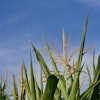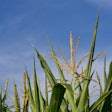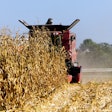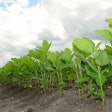
The latest U.S. Drought Monitor report reveals recent weather patterns have brought both relief and concern to America's agricultural heartland, reshaping the drought landscape and impacting crop progress across the nation. While the central Plains and Midwest have seen substantial improvements, the West continues to grapple with worsening drought conditions.
In Texas, the only state in the South still experiencing drought, downpours delivered significant relief but also sparked flooding. San Antonio experienced its second-wettest June day on record, with 6.11 inches of rain falling on June 12. However, experts caution that groundwater and aquifer depletion in south-central Texas will require more than a singular heavy-rainfall event for replenishment.
The High Plains region saw widespread drought improvement, although some significant agricultural problems persisted. Wyoming led the region with 36% of its rangeland and pastures rated in very poor to poor condition, followed by Nebraska at 30%.
In stark contrast, the West is facing rapidly developing soil moisture shortages and declining prospects for summer water supplies. The Northwest has been especially dry in recent weeks, with Montana reporting 65% of its topsoil moisture rated very short to short. Montana also led major production states in very poor to poor ratings for spring wheat (28% of the crop) and barley (25%).
The situation in the West is further complicated by an elevated wildfire threat, increased irrigation demands, and growing stress on rain-fed crops. In Oregon, the 3,600-acre Rowena Fire near The Dalles has already destroyed more than 150 structures, including several dozen homes.
Looking ahead, the 6- to 10-day outlook calls for above-normal temperatures across much of the eastern half of the country and the northern Rockies. This heat wave could further stress crops and increase water demands. However, there's a likelihood of near- or above-normal rainfall nationwide, with the greatest chances stretching from the Southwest into the Great Lakes States.
As farmers and ranchers navigate these changing conditions, they remain hopeful for more favorable weather patterns in the coming weeks. The agricultural community continues to adapt its practices to the evolving climate challenges, emphasizing the importance of water conservation and drought-resistant crop varieties.
The U.S. Drought Monitor is jointly produced by the National Drought Mitigation Center at the University of Nebraska-Lincoln, the United States Department of Agriculture, and the National Oceanic and Atmospheric Administration.


















